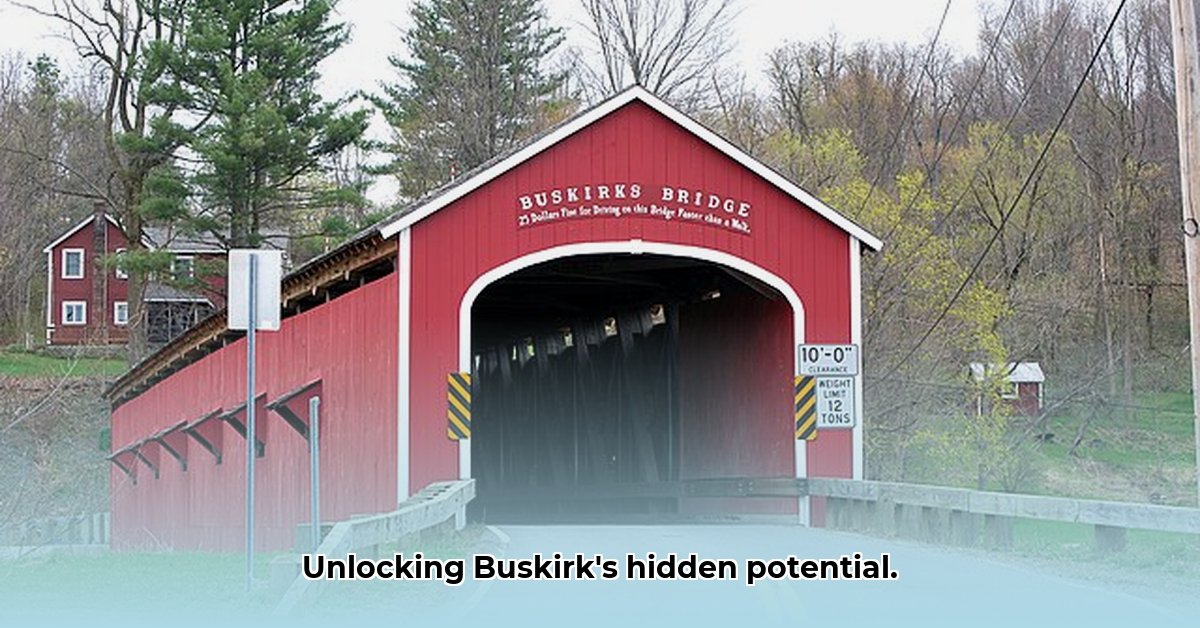
Buskirk, a town in Washington County, New York, presents a compelling case study in rural community development. With a population of approximately 1,078 (based on ZIP code data) and a low population density of around 45 people per square mile, Buskirk offers a unique blend of rural charm and untapped potential. However, realizing this potential requires a comprehensive understanding of its current state and a strategic approach to future growth.
Understanding Buskirk's Demographics and Economy
Currently, our understanding of Buskirk's demographics and economic landscape is limited. While the population is estimated at approximately 1,078, detailed data on age distribution, income levels, and household sizes are lacking. This information gap hinders accurate assessments of community needs and the potential for specific business types to thrive. Similarly, economic data is sparse, with initial findings suggesting around 15 businesses employing approximately 20 people and generating an annual payroll of $725,000. A deeper analysis is needed to identify economic strengths, weaknesses, and opportunities. This lack of granular data presents a significant challenge in developing effective strategies for future growth. What specific industries are represented? What are the unemployment and income levels? These questions remain unanswered.
Data Gaps and Research Needs: A Call for Action
The scarcity of comprehensive data forms a major obstacle to accurate projections about Buskirk's future. Critical information gaps include:
- Detailed Demographic Information: Precise age distributions, income brackets, and household compositions are crucial for understanding the community's needs and tailoring services accordingly.
- Complete Economic Data: A comprehensive survey of businesses, including industry types, employment numbers, and revenue figures, is essential for a robust economic assessment. Understanding the income distribution is also critical.
- Housing Trends: Data on housing availability, affordability, and trends is needed to inform housing development strategies and attract new residents.
Addressing these data gaps requires a concerted research effort, leveraging various sources such as census data, local business surveys, and potentially interviews with residents. This will provide a more nuanced and informed basis for decision-making.
Actionable Steps for Growth: A Multi-Pronged Approach
Unlocking Buskirk's growth potential requires collaborative efforts from local government, businesses, and residents. The following steps represent a strategic pathway towards sustainable growth:
For Local Government:
- Prioritize Data Collection: Invest in comprehensive data gathering on key demographic and economic indicators. This forms the foundation for informed policy decisions.
- Secure External Funding: Actively pursue grants and funding opportunities aimed at rural community development. This funding can support improvements in infrastructure, economic development, and community services.
- Develop a Comprehensive Plan: Create a long-term economic development plan encompassing strategies for growth, targeting specific improvement areas, and setting measurable goals. Public engagement is vital in this process.
- Enhance Infrastructure: Improve roads, internet access, and utilities to attract new businesses and enhance the overall quality of life.
For Businesses:
- Regional Collaboration: Explore partnerships with businesses in neighboring towns, expanding market reach and resource access.
- Targeted Marketing: Focus marketing efforts on the wider regional area (Glens Falls, for instance) to raise awareness and attract customers.
- Invest in Employees: Prioritize training and development to improve productivity and demonstrate community commitment.
- Embrace Adaptability: Be proactive in responding to changing economic conditions and consumer preferences.
For Residents:
- Community Advocacy: Advocate for improved infrastructure and services. Participate actively in local government processes.
- Support Local Businesses: Support local businesses and community initiatives to foster a more vibrant community.
For Researchers:
- In-Depth Studies: Conduct research focusing on Buskirk's unique economic and demographic characteristics to guide policy decisions.
- Continuous Monitoring: Track economic indicators and population shifts to adapt to evolving circumstances.
Risk Assessment and Mitigation: Navigating Potential Challenges
Buskirk faces inherent risks that need to be acknowledged and mitigated:
| Risk Category | Probability | Impact | Mitigation Strategy |
|---|---|---|---|
| Economic Stagnation | Medium | High | Diversify the economy; attract new businesses; improve infrastructure; support entrepreneurship |
| Population Decline | Low | Medium | Enhance quality of life; attract families and professionals; promote the town's unique features |
| Infrastructure Gaps | Medium | Medium | Secure funding for infrastructure improvements; explore public-private partnerships |
| Data Deficiency | High | Medium | Increase data collection; conduct further research; utilize existing regional data sources |
Legal and Regulatory Compliance: A Foundation for Growth
Adherence to zoning regulations, environmental permits, tax codes, and data privacy laws is crucial for sustainable growth. Proactive compliance minimizes risks and ensures ethical and legal development. Regular review and updates of compliance procedures are vital to adapt to changing regulations.
Buskirk's Future: A Path Towards Sustainable Growth
The future of Buskirk hinges on collaborative planning, data-driven decisions, and a shared commitment to growth. By addressing data gaps, mitigating risks, and proactively implementing strategies, Buskirk can create a thriving and prosperous community. The journey requires collective effort and a long-term vision. This collective effort will determine Buskirk's success. The future is within reach.